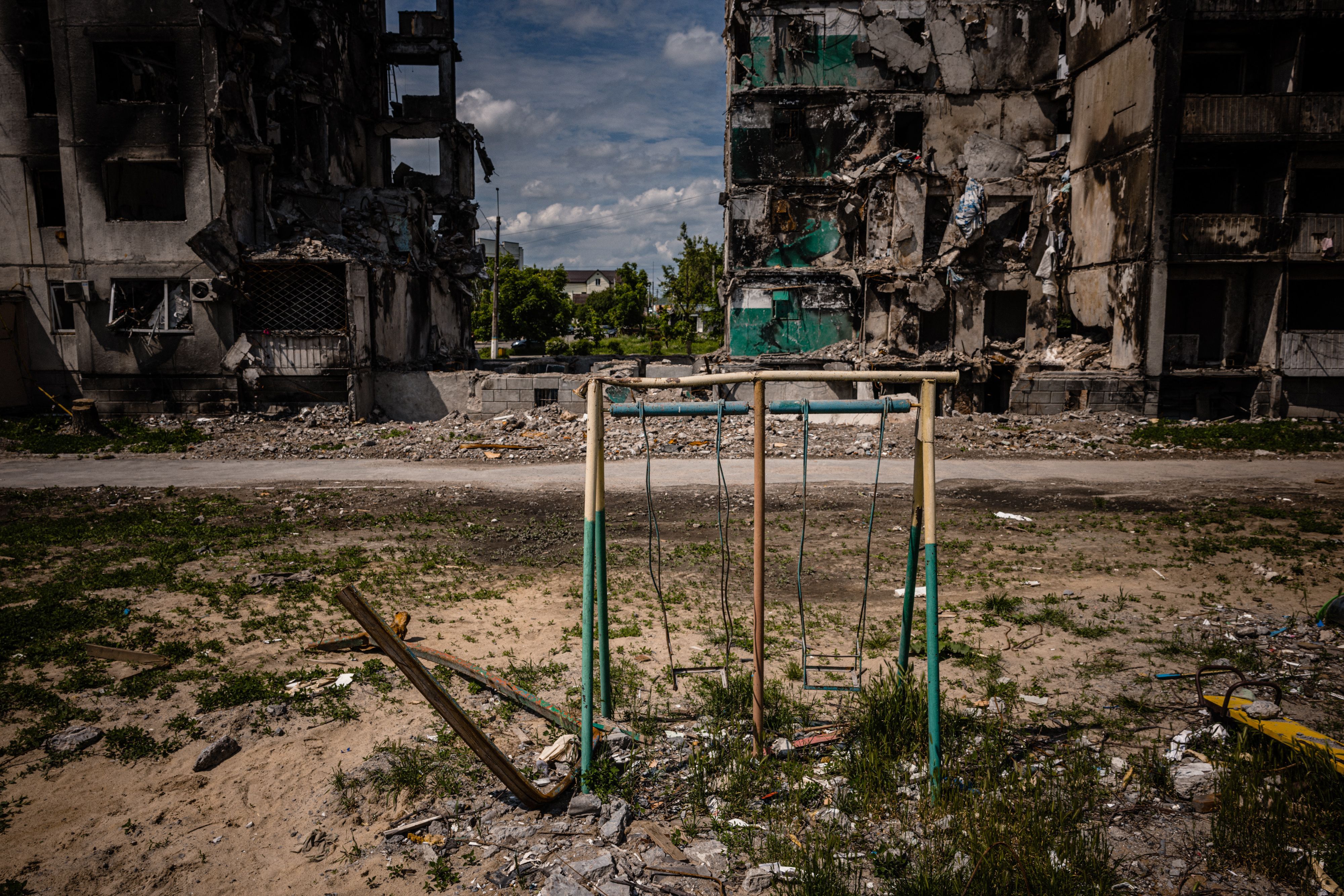The first 100 days of war in Ukraine could be just the beginning

100 days into Russia's invasion of Ukraine, no end to the bloodshed is in sight and neither side seems poised for a decisive victory.
The big picture: Vladimir Putin failed to take Kyiv, but he's now moving toward his stated goal of "liberating" the Donbas region of eastern Ukraine, and experts say Ukraine is unlikely to force Russian forces out of the country entirely.
- Neither side is inclined to lay down its arms, and the battlefield advantage could soon swing back toward Ukraine.
Driving the news: Russian forces have reportedly taken most of the key city of Severodonetsk in the past few days — surprisingly quick progress given Ukraine's previous success in urban warfare.
- Russia is turning towns to rubble before taking them, and is also inflicting heavy casualties on Ukraine's best-trained forces, which are concentrated in the Donbas.
- Ukrainian President Volodymyr Zelensky says Ukraine is losing 60 to 100 soldiers per day, and Russia now controls 20% of Ukraine's territory.
On the ground: Cpl. Andrii Shadrin, a Ukrainian soldier fighting in Luhansk, tells Axios the Russians have a seemingly inexhaustible supply of artillery and armored vehicles.
- While they're often using older weaponry and inaccurate artillery, he says, they are still able to flatten everything in their path.
- "They just need to capture the land. I don't even think they know what to do with the territory they capture," he says.
Yes, but: Many military analysts believe Russia's ability to push forward will be exhausted relatively soon, potentially giving Ukraine — which will be able to pull in reserve forces and western weaponry — an opportunity to counterattack and reclaim territory as the summer drags on.
- But it's also possible Putin will again expand his targets beyond the Donbas, after his initial offensives on Kyiv and other cities collapsed. Russian forces seem to be adapting to those earlier failures.
- In any event, Russia's recent progress has at least temporarily dampened the speculation that Ukraine will be able to chase Russia back to the pre-invasion lines, or out of the country entirely.

Inside Russia, public support for the war remains relatively steady at around 80%, says Denis Volkov, director of Russia's most respected independent pollster, the Levada Center, though polling is fraught under such circumstances.
- Russians are increasingly viewing the conflict as against the West, rather than only against Ukraine, which "helps to mobilize support behind the regime," Volkov tells Axios.
The U.S. is sending sophisticated rocket systems that will allow Ukrainian forces to strike from a distance.
- Ukraine has promised not to use them to strike inside Russia, but Kremlin spokesman Dmitry Peskov accused Biden of "deliberately pouring oil on the fire."
- Biden, for his part, wrote in the NYT that his objective is to put Ukraine "in the strongest possible position at the negotiating table" by helping strengthen its position on the battlefield.
Ukrainian President Volodymyr Zelensky has shown no inclination to accept a deal that cedes more territory to Russia. Putin has been unwilling to talk to Zelensky at all.
- German Chancellor Olaf Scholz and French President Emmanuel Macron have kept up their calls to Kyiv and Moscow in hopes of generating some momentum for diplomacy.
- But it currently seems likely that a war that has lasted 100 days could drag on for hundreds more.
What to watch: A protracted conflict will reverberate ever more strongly through the global economy. World leaders and international organizations are sounding the alarm about how continued fighting, Russian blockades and western sanctions will devastate the global food supply.
- But global attention is beginning to wane. There has been a 22-fold decrease in social media interactions (likes, comments, shares) on news articles published about Ukraine between the first week of the war and the most recent week, Axios' Neal Rothschild reports, based on NewsWhip data.
Go deeper: Timeline of 100 days of war